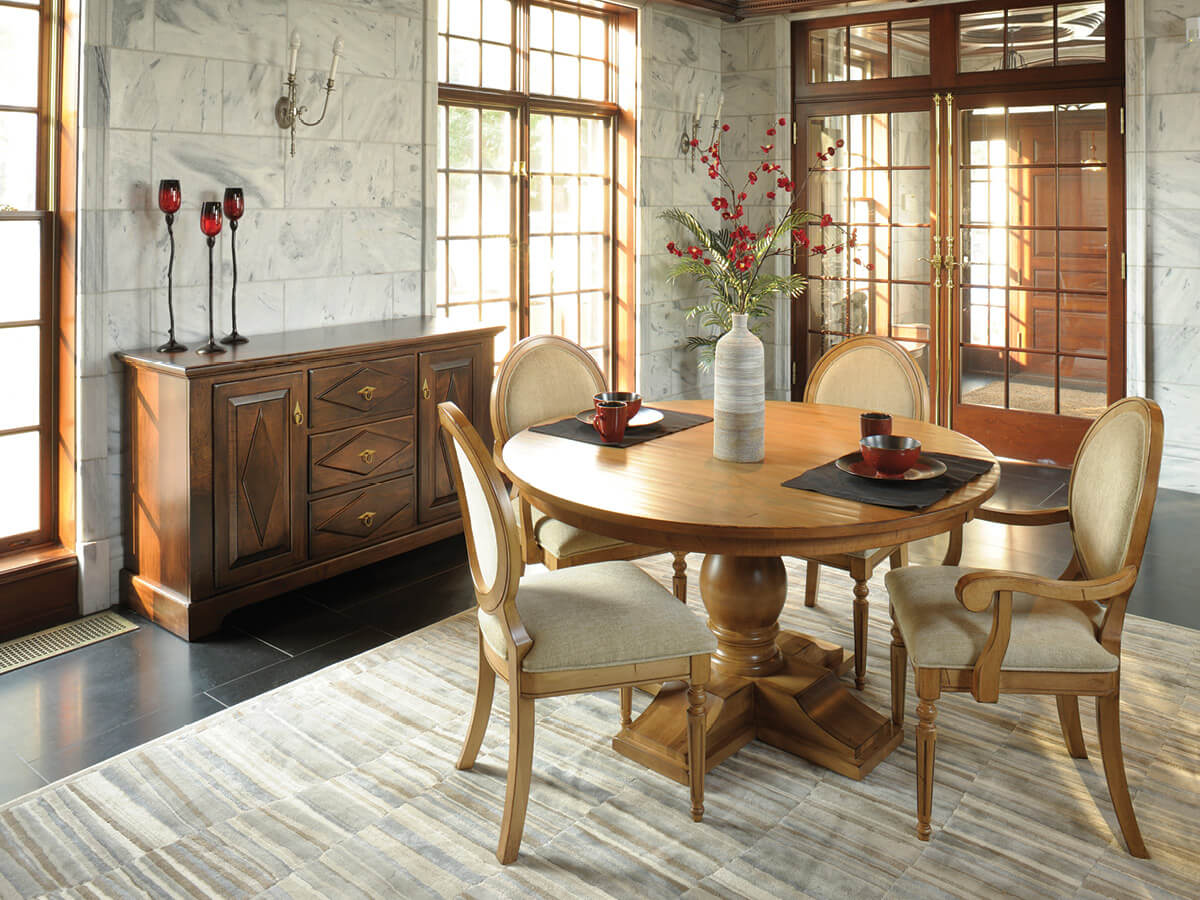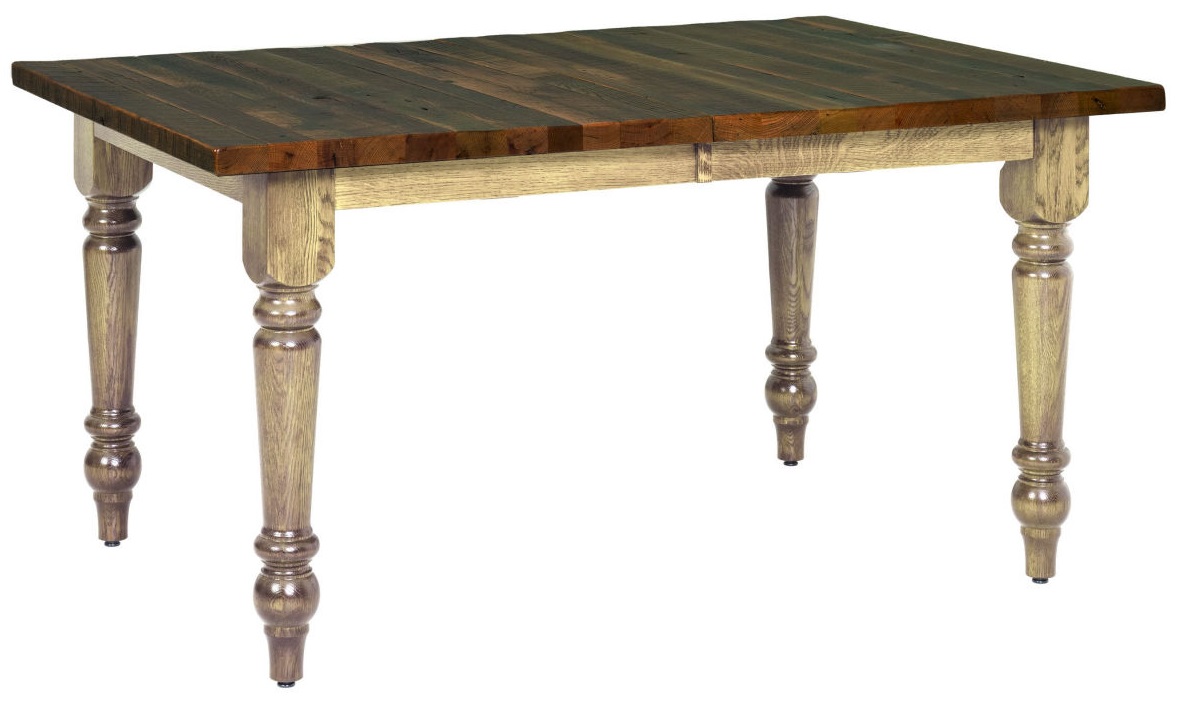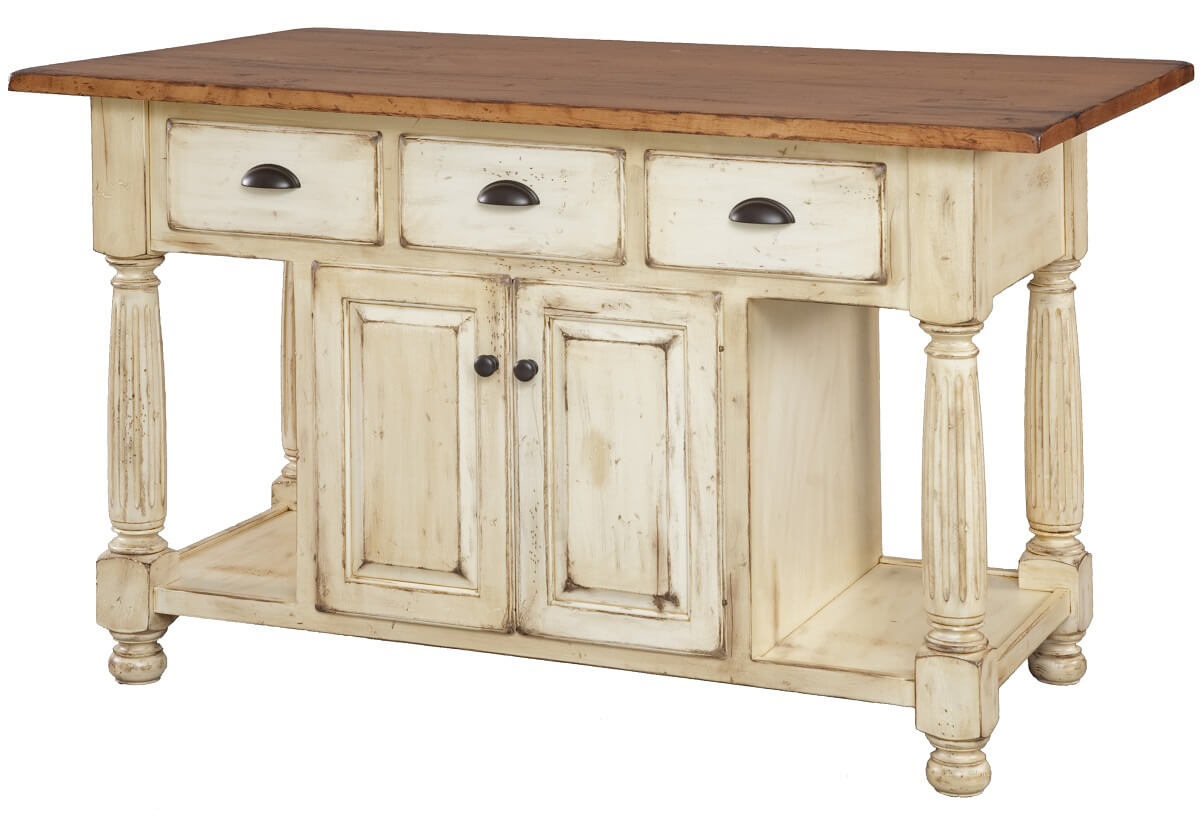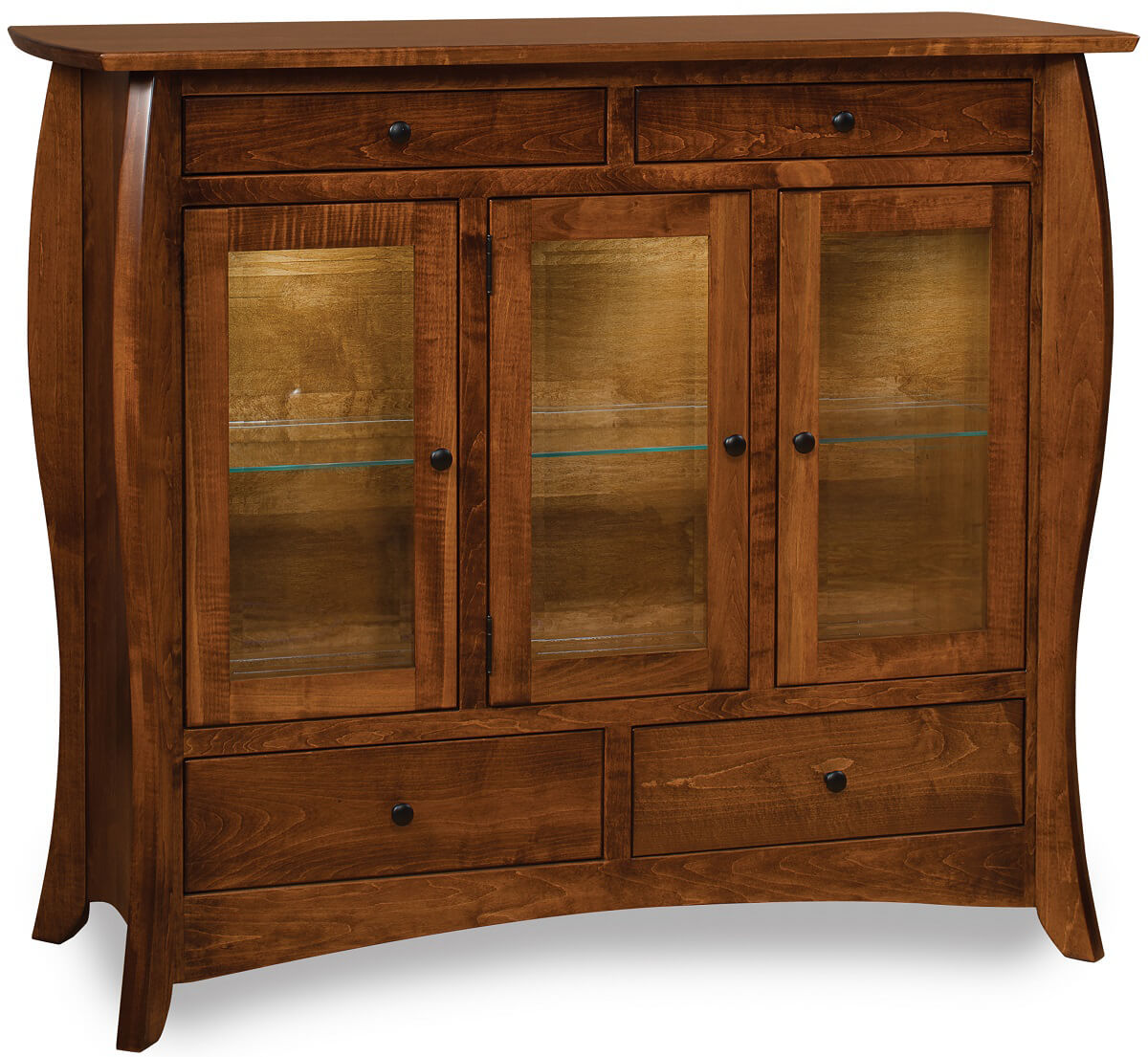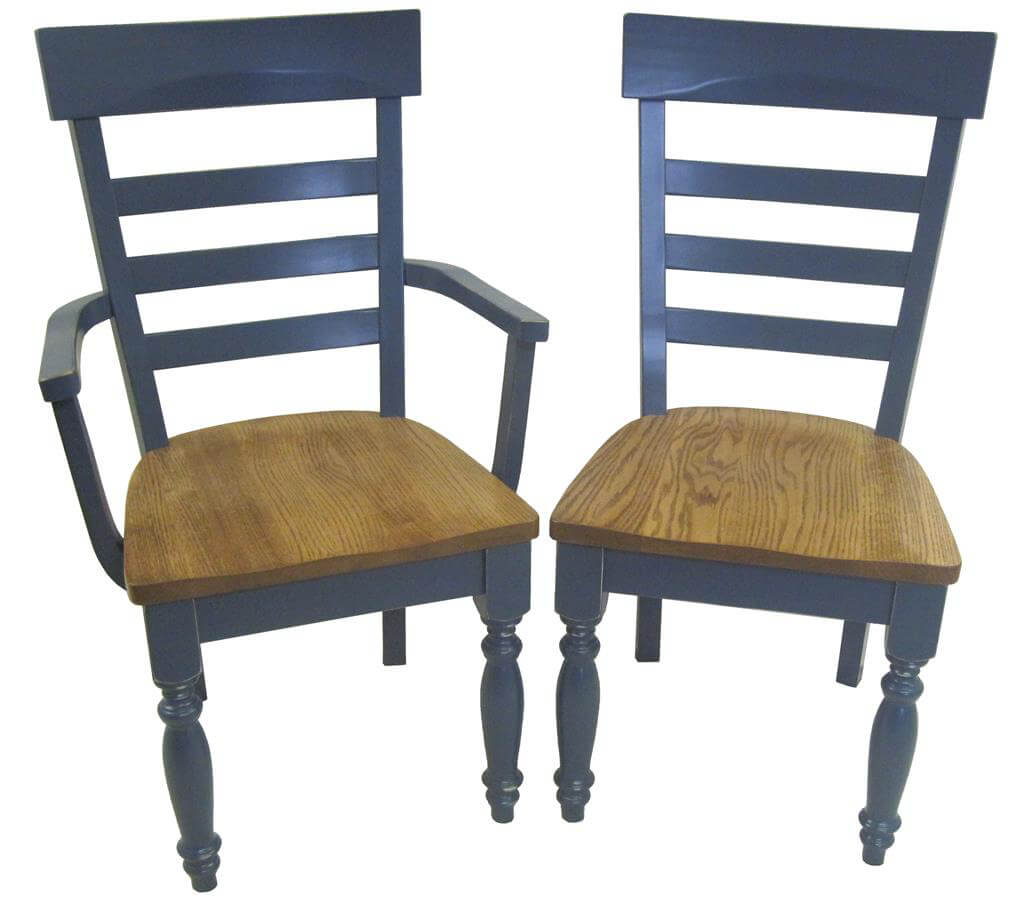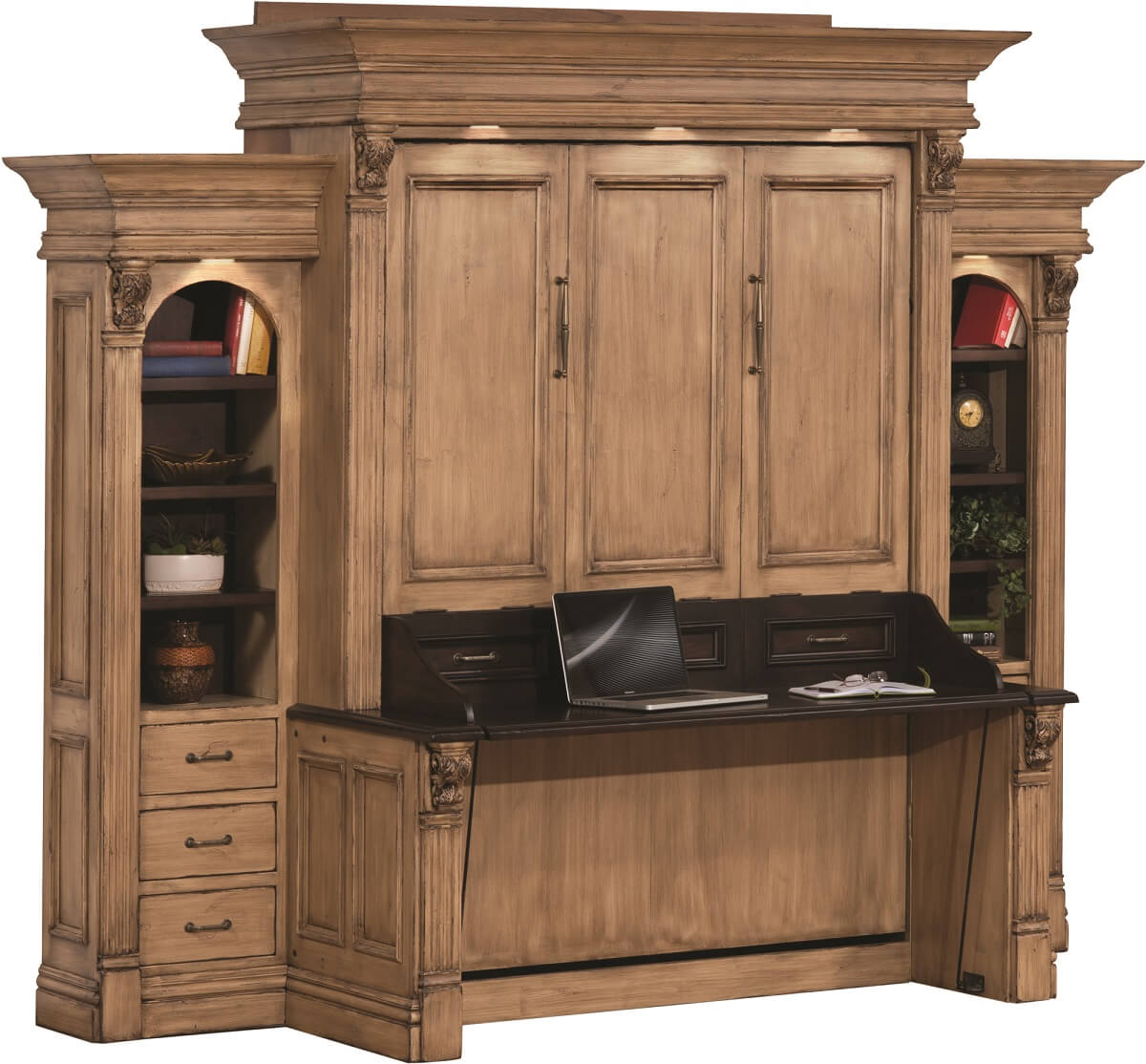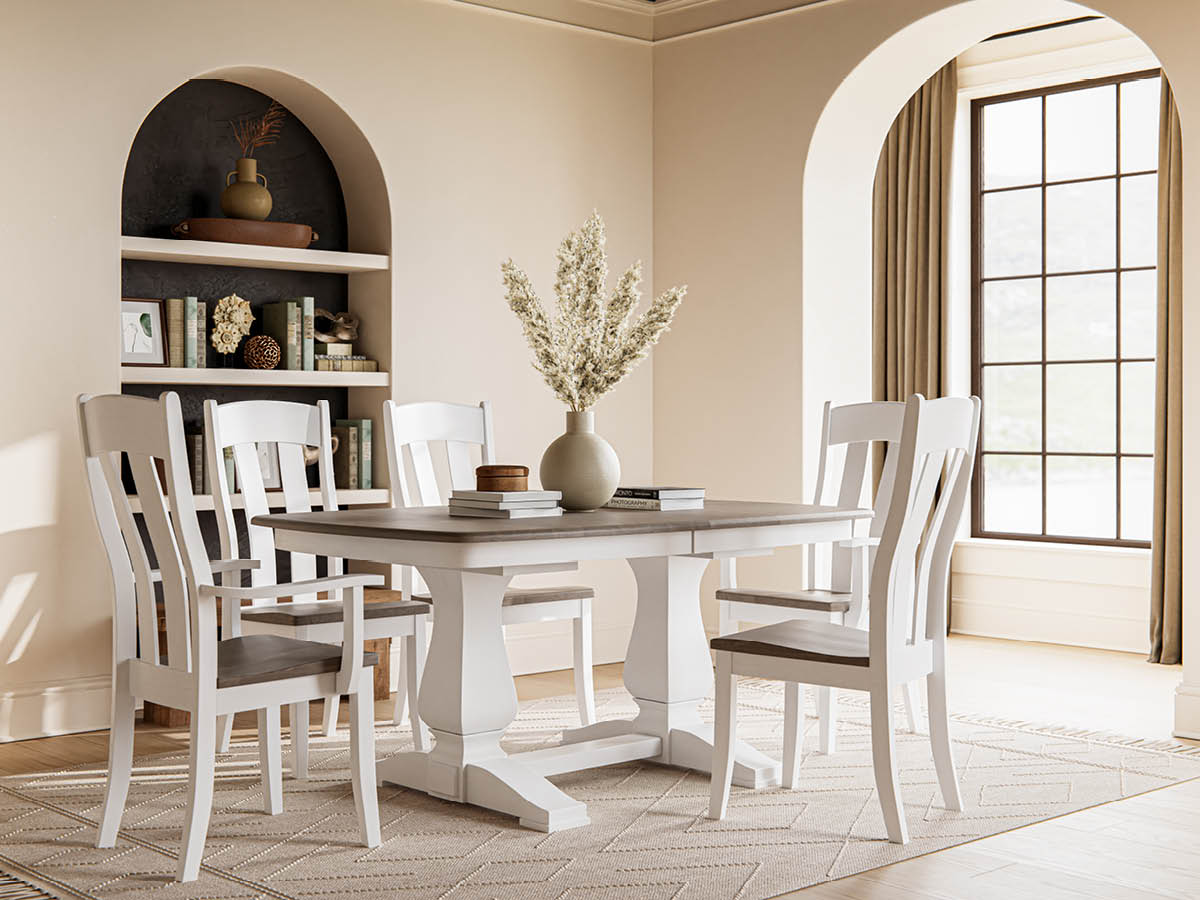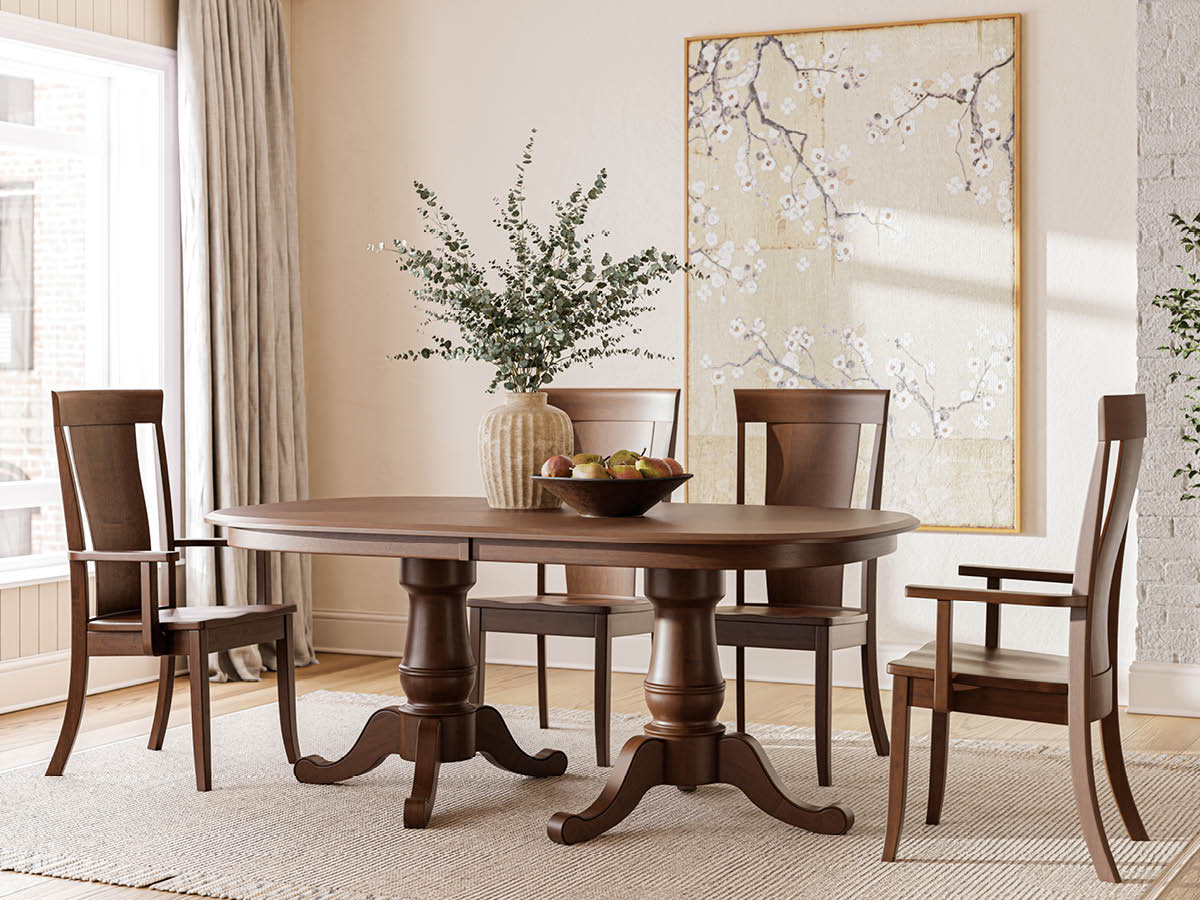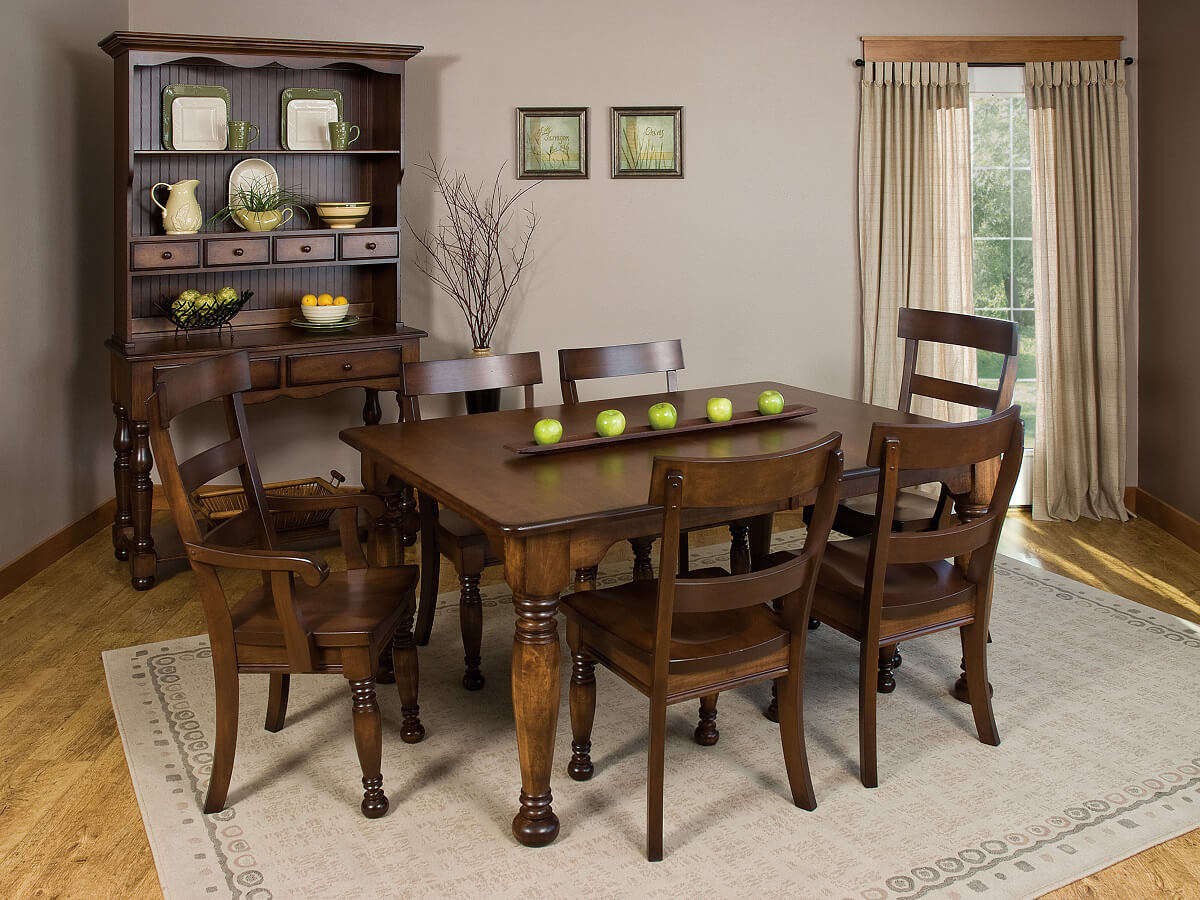French Country Style: What Is it and Example Furniture
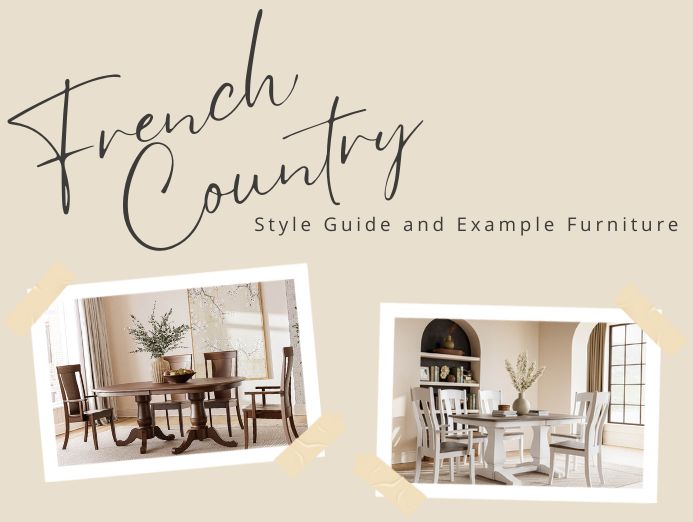
As its name implies, French Country embodies the rustic charm and elegance of the French countryside, bringing warmth and sophistication into your home. It should feel truly timeless–neither old-fashioned nor embodying the fleeting trends of today. Yet, what precisely characterizes French Country furniture, and how can you seamlessly integrate its unique features into your personal decor?
To appreciate the guiding principles of French Country furniture, you must understand its roots. This style theme gained prominence during the 17th and 18th centuries when rural French craftsmen crafted pieces that echoed the simplicity and functionality of rural life, using readily available materials such as oak and walnut. Whether by choice or necessity, there has always been a significant focus on natural textiles and elements within French Country furniture and decor, effectively "bringing the outdoors indoors."
In this blog post, we'll take a journey through the picturesque landscapes and explore the defining features of this much-beloved design theme. Whether you're a seasoned admirer of this design or just discovering its allure, you’ll find valuable tips, inspiration, and examples of French Country furniture for your browsing pleasure.
Shop French Country Bedroom Furniture
Shop French Country Dining Room Furniture
Earmarks of French Country Furniture
-
Reclaimed wood or hardwoods that embrace organic textures - French Country furniture can utilize a broad range of hardwoods, from the sleek to the rugged. One theme you may see repeatedly in French Country is the usage of reclaimed wood or rough sawn timber that emphasizes its natural character. Both often appear weathered and aged, lending a sense of history and rustic authenticity to the furniture pieces. The inherent imperfections and grain patterns in the wood create a warm and welcoming ambiance, evoking the essence of the French countryside and its close connection to nature.
-
Distressed or antique finishes - Unlike many other decor themes, French Country furniture frequently embraces distressed or antique finishes to capture the essence of well-worn, time-honored pieces. However, take note, not all French Country furniture necessarily sports this type of finish.
-
Curves, curves, and more curves - While some design themes are built on the foundation of straight, crisp lines, French Country furniture relies heavily on feminine contours and rounded silhouettes to create a sense of graceful, organic flow and a warm, inviting ambiance.
-
Embellished legs and feet - French Country furniture distinguishes itself from other styles through its signature turned legs and cabriole legs, as well as the incorporation of bun feet. Turned legs are characterized by their cylindrical shape, crafted by turning a piece of wood on a lathe, resulting in a graceful and rounded appearance. Similarly, cabriole legs are shaped to offer a wave-like silhouette that is lithe and undeniably graceful. Both leg styles (which we explore in Wood Table Leg and Base Styles) go well beyond mere function to add a touch of fanciness, separating French Country-styled furniture from minimalist design themes like Mission and Shaker.
-
Carved aesthetic enhancements - French Country furniture is often completed by carved embellishments. Details are never overwhelming or as extravagant as those found in Queen Anne decor, instead serving as a subtle demonstration of the tender care and skilled craftsmanship that went into the French Country piece’s creation.
Additional Earmarks of French Country Decor
- Muted colors embracing earthy tones and pastels - One of the most distinctive traits of French Country furniture and decor is the color scheme. The possibilities cover quite a spectrum, from feminine pastels to colors found in nature. It may be more beneficial to emphasize what the French Country style does not include: bold, intensely saturated colors that sharply contrast with one another. This means, instead of stark blacks and whites, opt for grays, off-whites, beiges, and browns.
-
Natural materials - Within the home’s structure, embrace natural materials like stone, clay, and brick for flooring, countertops, and exposed walls to add texture and warmth. As for the decor, embrace natural fabrics like linen or cotton or patterned materials that pay homage to floral or natural designs.
-
Handcrafted goods - The emphasis placed on craftsmanship should extend well beyond your French Country furniture to smaller details. These can include hand-painted dishware, artisan-crafted light fixtures, and individualized art pieces.
-
Inviting nature into the space - Let your French Country influences truly shine by bathing them in natural light and dressing them up with live or dried flowers. Nature can also inspire man-made goods as well, from the paintings you hang to the pattern of your throw pillows.
- Add visual depth to living rooms and bedrooms with varied furniture assortments - Certain styles work wonderfully with furniture that all have the same colors and wood finishes. However, the down-to-earth nature of French Country style lets you embrace variations to make the decor feel “homegrown” over time. This can mean mismatched chair fabrics, different stains, or even playing with mixed patterns. However, don’t let basic design principles go out the window, entirely. You’ll want to ensure that all hues complement one another, a topic we explore more in To Mix or Match? A Guide to Choosing Wood Stains That Go Together. Luckily, the gentle tints and shades of French Country decor make it fairly easy to create a cohesive color theme.
Tips for Executing French Country Decor
-
Carefully select (and splurge on) your fabrics - This principle extends to your choice of curtains, table cloths, seating upholstery, bed linens . . . the list goes on and on. French Country-friendly patterns include lace, toile, floral motifs, and the iconic fleur-de-lis. Patterns like gingham, stripes, and checkered can work as well, as long as the colors stray from the principles of French Country decor. Fabrics that fit within French Country include linen, cotton, lace and burlap.
-
Mix newly crafted furniture with antique decor touches - Incorporate vintage or antique furniture, mirrors, chandeliers, and architectural salvage pieces to evoke a sense of history reminiscent of French Country decor.
-
Pay extra attention to the lighting - While we’ve mentioned the importance of natural lighting to French Country decor, what’s streamlining through the windows should hardly be your only light source. Look for fixtures that echo French Country themes (curves and distressed finishes) without coming across as too opulent. Glass, wrought iron, wood, and tin all work well with the greater decor. Candle-inspired sconces, lantern pendants, understated chandeliers, and candelabras are all quite compatible with French-Country, though they’re far from being your only options.
- Go the extra mile with faux ceiling beams - What could feel more “country” than wooden ceiling beams? Don’t worry—faux beams are actually relatively affordable and may not require a professional to attach to your ceilings. Just make sure that the room has high ceilings, or else you risk making the space feel smaller.
FAQ About French Country Furniture and Style
French Country decor has endured for centuries, proving that its staying power regardless of what may be “buzzy” in home decor trends. Therefore, French Country furniture is a solid choice for long-term investments like solid wood furniture since, in short, it will always be in style.
Firstly, when it comes to your home’s style, there are no strict rules. Your decor should come down to what pleases your eye and reflects your personality. That point aside, the two design themes in question—American Colonial and French Country—share multiple crossovers both historically and stylistically. As seen with our Early American dining chairs, this style values simplicity in both the wooden silhouettes and upholstery design. Iconic elements of Colonial American furniture include tapered and turned legs, as well as Windsor backs, all of which would seamlessly integrate with a French country-styled home.
When blending other decor themes with French Country, find other styles that are equally “down-to-earth” and share similar design principles. These can include Modern Farmhouse, Rustic Elegance, and Mid-Century, amongst others. Our top recommendation is to remain mindful of the core principles of French Country when merging different styles. Failing to do so may result in losing the desired French Country aesthetic. For instance, combining French Country with modern industrial elements, with the latter's penchant for bold colors and robust materials, can overpower the inherent lightness of French Country.
Prices will vary from one furniture piece to the next, making it impossible to give a blanket answer. However, keep in mind that French Country furniture is renowned for its intricate flourishes, emphasis on quality materials like solid hardwoods, and overall craftsmanship, all of which contribute to a higher price point when compared to simpler or shottier pieces.
Ready to Buy French Country Furniture?
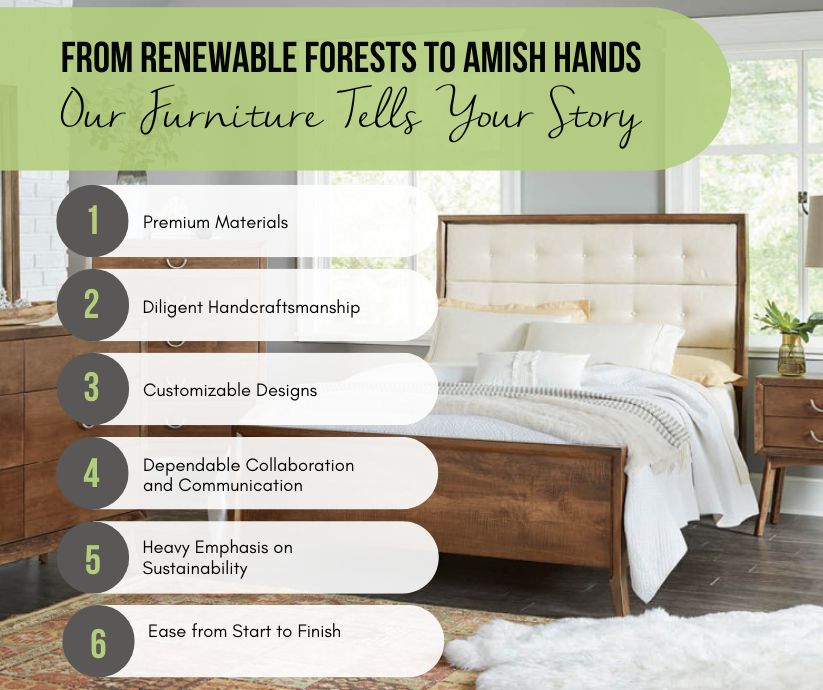
Combine French Country beauty with the unparalleled woodworking skills of Amish furniture makers, and magic emerges! Countryside Amish Furniture offers hundreds of French Country pieces, all of which can be customized with your favorite wood species and stain. The results are highly personalized and built to stand the test of time, making them heirloom-worthy for generations to come. View the video below to learn more about who we are and our ordering process.

